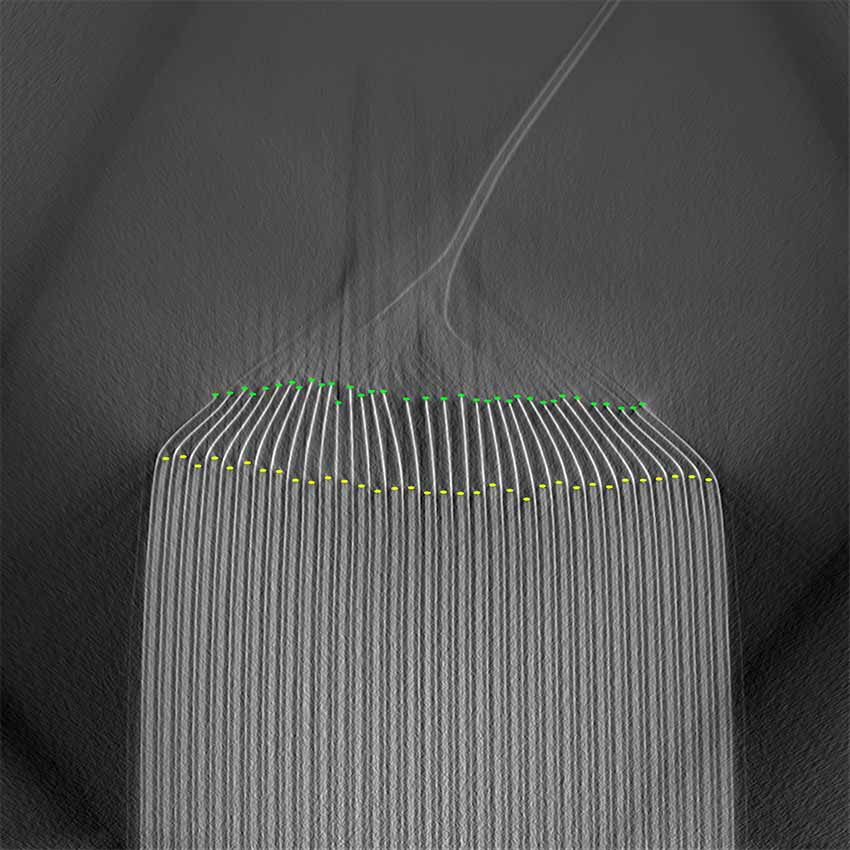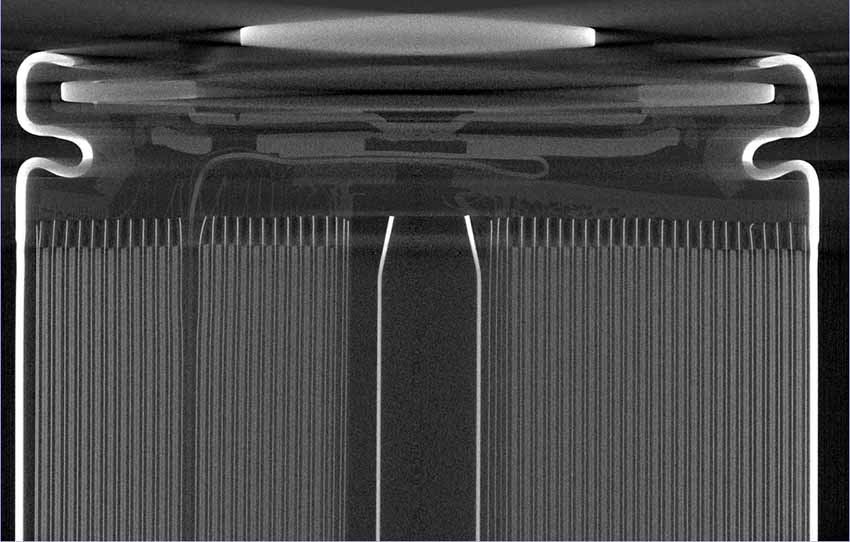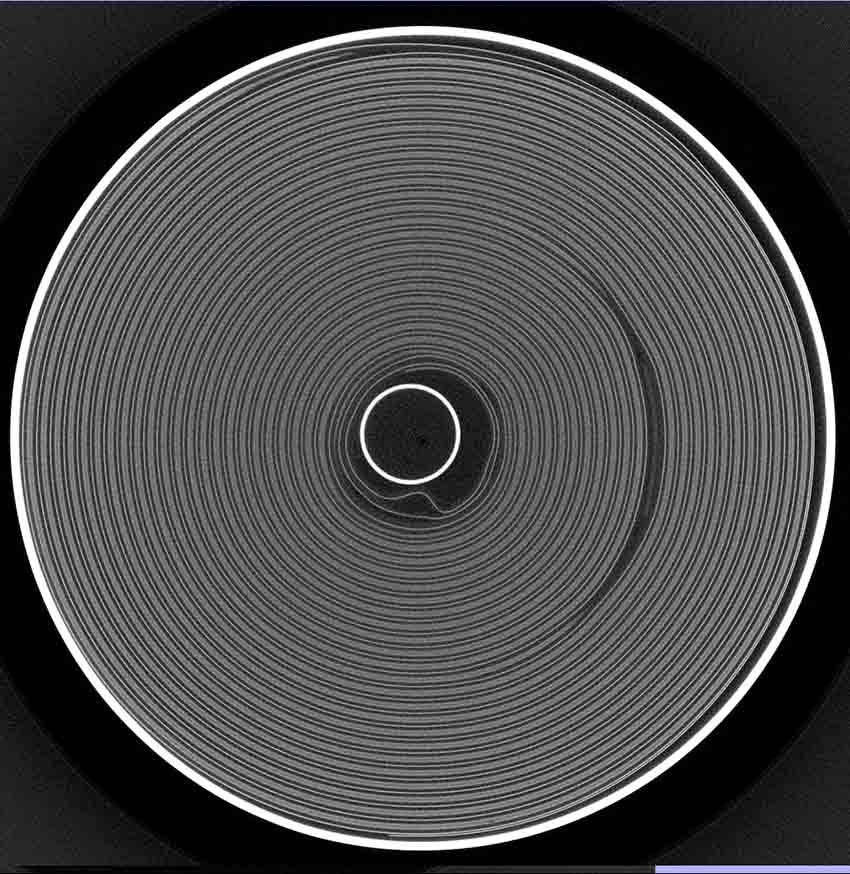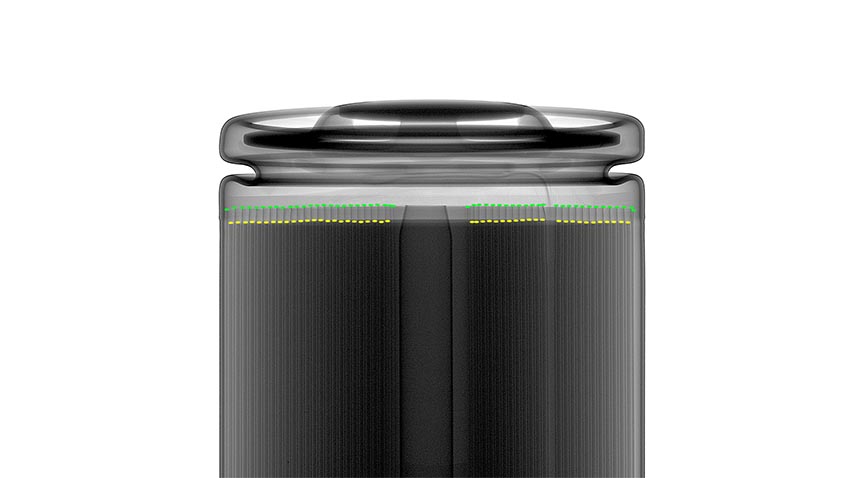Exacom is part of the renown Viscom corporation. The company designs, develops and manufactures X-ray solutions, specifically for battery cells. Exacom stands for passion, innovation, out of the box thinking, honesty and reliability, as well as for agility and a hands-on mentality. With the innovative high speed X-ray imaging solutions Exacom’s goal is to create a safer, greener, and more resourceful future.
As a global leader in non-destructive imaging solutions, Exacom offers unmatched expertise in customized metrology processes, automation and line integration. With an adaptable system portfolio of X-ray battery inspection solutions, manufacturers benefit from high-throughput, flexible configurations and 100% quality control.
Their dedicated team of highly experienced battery inspection professionals, supports the integration of inline metrology solutions. With the innovative technologies, world-class companies rely on Exacom’s solutions to produce long-lasting, high quality and reliable battery cells.
Easy Engineering: What are the main areas of Exacom’s activities?
EXACOM: The detection, measurement and classification of design-specific failures are significant criteria for producing high quality and cost-effective battery cells. Exacom X-ray metrology components are all developed in-house to ensure the highest possible accuracy levels for our clients – regardless of cell format or size.

Exacom specializes in advanced inline metrology for various cells, including coins, cylindrical, pouch, and prismatic cells. With proven results in energy storage, consumer goods and e-mobility our customers benefit from an experienced research and development team, consisting of engineers, scientists and software developers, that can scale solutions from R&D to pilot lines and mass production.
E.E: What’s the news about new products? What is new about these products?
EXACOM: Whether inspecting stack alignments, measuring anode overhang, analyzing telescoping or detecting particle contamination, Exacom’s solutions offer this and much more at high throughput rates. Our highly flexible carrier and track systems are integrated seamlessly into assembly processes at production speeds. Traceable product data powered by AI optimize production, ensuring both high yields and long-lasting product safety.
Whether used in a lab or in production, the non-destructive inspection helps detect faulty cells, increases production efficiency and ensures safe batteries. You can gain valuable insights into the internal cell structure during or after production. With our solution systems you will be able to achieve the highest grade of absolute accuracy . We provide certified and traceable calibration artifacts, as well as custom acceptance specimen to prove the metrology performance at any given point.
In many cases, the classic application is limited in regard to complex structures, variations and fast analysis. While maintaining full traceability of the results, we utilize the steadily collected production data to streamline custom analysis solutions for individual products. The latest generation of the AI model can detect 95% of the electrodes without further training to the model, specifically to the tested cell. Therefore, the amount of retraining is reduced tremendously.

The latest generation of inline CT machines could significantly reduce the cycle time for a 3D image acquisition being used to generate a CT. The analysis of the corresponding slices is done parallel with no impact on the cycle time. With a CT in below 4 seconds this is the fastest solution in the market at the moment and a milestone in our mission to support the quality assurance of battery manufacturers. Not only with highly reliable inspection solutions, but also with the shortest testing times. This is also proven by the ultrafast 2D inspection solution for cylindrical cells where 2D inspection is done reliably fast with 175 cells per minute. It can not only take an image that fast, but can also detect all features in the image.
E.E: What are the product ranges of Exacom?
EXACOM: The product range of Exacom is as wide as the solution itself. We provide machines for every cell type regardless of technology, wound or stack and size – from coin cell to blade battery. Our x-ray solutions always consist of a full protection cabinet with an adopted and specialized image chain to capture images in the shortest amount of time. In addition, we provide customers with an AI model that is specifically trained to the customer’s cells to achieve the best performance in cell testing and yield – from manufacturing laboratories to mass production.
Furthermore, Exacom also supports customers with customer specific developments and application support as well as service for every machine. We are a turn-key partner for x-ray metrology solutions in battery cell manufacturing.
E.E: At what stage is the market, in which you are currently active?
EXACOM: Exacom is focused on the international battery market. The Asian market is already at a high volume of production of battery cells, but there are more and more players ramping up their productions. Due to high investments from the private sector and public fundings there is an extremely fast-growing battery industry in Europe. However, with the introduction of the Inflation Reduction Act it slightly shifted towards the American market

E.E: What can you tell us about the market trends?
EXACOM: At the moment everyone in the industry can notice that the battery cell production is going through the roof. High investments led to many projects. Lots of established players increased their capacities; mostly Asian companies. But there are also more and more new players in the market.
Over a long time, it seemed unclear, which cell format might be the best for battery electric vehicles, but now it seems to be more and more clear that most car OEMs focus on prismatic cells. Regarding electronic devices there is no change at all – they are sticking to pouched cells.
The good news for us is that the demand for high quality cells is constantly rising. This means, not only are the cells safe for the consumer, but also have a high performance to allow e.g., long ranges in cars and a maximized number of charging cycles.
Additionally, the demand for efficient production processes and process learning within this production process is something of common interest. Especially in Europe and North America battery cells can only be produced competitively if scrap rates are reduced dramatically. This can only be achieved with reliable inspection technologies and the cross correlation between inspection results and production equipment. So that you can constantly adjust production parameters to account for changes in raw material charges and machine status due to wear and tear or maintenance.

E.E: What are the most innovative products?
EXACOM: Currently our most innovative product is the iCT. It is an inline CT system that acquires a set of images to reconstruct a 3D volume of the inspection area of a stacked cell – an industry proven solution that allows to stick to typical cycle times in a stacked cell production line for cells for BEVs. This system needs less than 4 seconds to scan the cell and provides feedback about the cell`s quality and is fully integrated in the production line. Compared to our competitors these machines are metrology systems following certain rules for approval. This means that these systems go through a specific measurement system analysis (MSA) like e.g., VDA5.
E.E: What assumptions do you have for 2023/2024?
EXACOM: 2023 and 2024 will be very interesting in terms of the development in the European and Northern American battery market. Many companies are ramping up their production. It will be interesting to see if all measures are taken correctly to establish a competitive battery cell production to compete with the Asian pricing.

